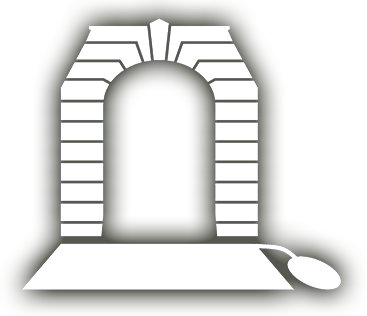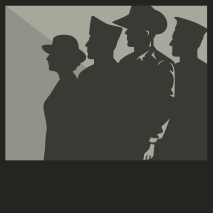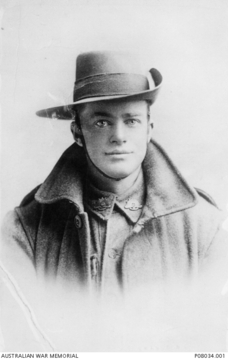
FORRESTER, James Patrick
| Service Number: | 7005 |
|---|---|
| Enlisted: | Not yet discovered |
| Last Rank: | Private |
| Last Unit: | 38th Infantry Battalion |
| Born: | Wycheproof, Victoria, Australia, 6 August 1891 |
| Home Town: | Wycheproof, Buloke, Victoria |
| Schooling: | Towaninny State School, Victoria, Australia |
| Occupation: | Farmer |
| Died: | Killed in Action, France, 24 August 1918, aged 27 years |
| Cemetery: |
Bray Vale British Cemetery, Bray-sur-Somme Plot I, Row B, Grave No. 6. |
| Memorials: | Australian War Memorial Roll of Honour, Nullawil District War Memorial, Nullawil War Memorial, Wycheproof Dumosa & Towaninnie Roll of Honour |
World War 1 Service
| 23 Nov 1916: | Involvement Private, 7005, 5th Infantry Battalion, --- :embarkation_roll: roll_number: '8' embarkation_place: Melbourne embarkation_ship: HMAT Hororata embarkation_ship_number: A20 public_note: '' | |
|---|---|---|
| 23 Nov 1916: | Embarked Private, 7005, 5th Infantry Battalion, HMAT Hororata, Melbourne | |
| 24 Aug 1918: | Involvement Private, 7005, 38th Infantry Battalion, --- :awm_ww1_roll_of_honour_import: awm_service_number: 7005 awm_unit: 38th Australian Infantry Battalion awm_rank: Private awm_died_date: 1918-08-24 |
Help us honour James Patrick Forrester's service by contributing information, stories, and images so that they can be preserved for future generations.
Add my storyBiography contributed by Stephen Brooks
James Patrick (Jim) Forrester was the son of Richard and Ellen Forrester, of Towaninnie, Victoria, a farming district about 20 kilometres north of Wycheproof. James’s father had passed away in 1905, when he was about 15 years of age. He had eight brothers and sisters.
James joined the 38th Battalion in the field in late August 1917. He became a Lewis Gunner in C Company. Australian soldiers took to using the Lewis gun with great enthusiasm. They established a formidable reputation for their skill and efficiency with the weapon.
James saw a lot of fighting and became proficient in the use of the Lewis Gun. He was slightly wounded in the hip during March 1918. His death and burial were recorded by a lot of his mates in his Red Cross Wounded and Missing file.
The local paper, the Mount Wycheproof Ensign, reported his death, “Mrs E. Forrester, of Towaninnie, received many expressions of sympathy when it became generally known that her son, Pte. James P. Forrester, had been killed in action on August 24th. Pte. Forrester decided to enlist soon after war broke out, but was twice rejected and had to undergo a serious operation before he succeeded in passing. He was very popular and highly esteemed by all who knew him, was 26 years of age.”
It was reported that on volunteering for a hazardous undertaking in France, he said “I could not stand back, as there was so few volunteering. I am sure my mother would be the last to wish me to do so. I have only to die once, and a few years earlier will not make much difference, only that I would like to see old Towaninnie again.”
During December 1918 a letter to his mother was published in the Quambatook Times.
“Mrs. E. Forrester, of Towaninnie, has received the following letter from Captain C. Peters (38th Battalion), concerning the death of her son, Private J. R. Forrester, who was killed in action: - 'Dear Mrs. Forrester,-The greatest sympathy with you in your great sorrow is felt by all the lads of this Company, for they too have a lost that of a loyal and trusted friend and comrade. Pte. Forrester was a fine man, a brave and skilful soldier, a thorough gentleman, popular and esteemed by all his comrades and officers. Since joining the Battalion 12 months ago, he had given complete satisfaction in his work as a Lewis machine gunner, showing great interest in the work, which required special qualification in skill and courage. I was not with C Company at the time of his casualty, but I knew Private Forrester, and had the very highest regard and liking for him, knowing him to be trustworthy and reliable, performing his duties thoroughly. His death was caused by a machine gun bullet. Whilst the Company was holding the line forward of the Bray-Morlancourt Road he was lying in a shell hole firing his Lewis gun on an enemy position with the upper part of his body exposed, and received fatal wounds. He lived well, and he died well, too. You may well be proud of him. Pride may seem a small thing alongside so great a loss; but however greatly and nobly he may have lived, he could never have died grander or nobler. We tender our deepest sympathy, and your grief is shared by all his friends in this Battalion.”









